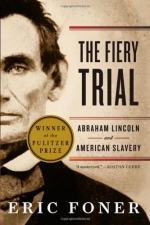
|
| Name: _________________________ | Period: ___________________ |
This test consists of 15 multiple choice questions and 5 short answer questions.
Multiple Choice Questions
1. What was the name of a major command of the United States Army during the 19th century which oversaw the military affairs in the country west of the Mississippi River to the borders of California and Oregon?
(a) Northwest Department.
(b) Department of the West.
(c) Department of the Mississippi.
(d) Northwest Organization.
2. Who was an anti-slavery activist who was active in the New York Committee of Vigilance and the Underground Railroad and helped Frederick Douglass escape to freedom?
(a) John P. Hale.
(b) David Ruggles.
(c) Martin Van Buren.
(d) William Lloyd Garrison.
3. In 1820, the American Colonization Society began sending black volunteers where to establish a colony for freed American slaves?
(a) The Pepper Coast.
(b) The Gulf Coast.
(c) The Gold Coast.
(d) The Humboldt Coast.
4. The Treaty between the United States and Great Britain for the Suppression of the Slave Trade was also known as what?
(a) The Lincoln Treaty.
(b) The Lyons-Seward Treaty.
(c) The Mason-Swift Treaty.
(d) The Trent Treaty.
5. Where was John C. Fremont commanding forces during the war and freeing the slaves of rebels whom he executed?
(a) Missouri.
(b) Arkansas.
(c) Kentucky.
(d) Tennessee.
6. Lincoln's Preliminary Emancipation Proclamation offered gradual emancipation and what to border states and any states that returned voluntarily to the Union?
(a) Freedom.
(b) The right to vote.
(c) Consequences.
(d) Compensation.
7. Who was the maternal grandmother who raised Frederick Douglass until the age of 7?
(a) Marie Bailey.
(b) Sarah Hale.
(c) Josephine Hale.
(d) Betty Bailey.
8. Abraham Lincoln issued the Emancipation Proclamation under his authority as what under Article II, section 2 of the United States Constitution?
(a) "Vice-President."
(b) "President."
(c) "Sovereign Body."
(d) "Commander in Chief."
9. In what year did West Virginia abolish slavery?
(a) 1795.
(b) 1865.
(c) 1864.
(d) 1831.
10. What state had already mostly returned to Union control, so it was not named and was exempted from the Emancipation Proclamation?
(a) Kentucky.
(b) Arkansas.
(c) Tennessee.
(d) Texas.
11. What group in American politics of the 1860s were adherents of the Democratic Party who demanded a more aggressive policy toward the Confederacy and supported the policies of President Abraham Lincoln when the Civil War broke out?
(a) Forty-Eighters.
(b) War Democrats.
(c) The Free Soilers.
(d) The Copperheads.
12. In the context of the American Civil War, what refers to slave states that did not declare their secession from the United States before April 1861?
(a) The Confederacy.
(b) Middle states.
(c) Undecided states.
(d) Border states.
13. Where did William H. Seward study law?
(a) Rutgers University.
(b) Penn State.
(c) Union College.
(d) New York University.
14. When was the abolitionist newspaper, The Liberator, founded?
(a) 1864.
(b) 1795.
(c) 1865.
(d) 1831.
15. The Constitutional Union Party was established in what year?
(a) 1850.
(b) 1860.
(c) 1851.
(d) 1861.
Short Answer Questions
1. What is the political principle that the legitimacy of the state is created by the will or consent of its people, who are the source of all political power?
2. What is a foreign policy which holds that political rulers should avoid alliances with other nations, but still retain diplomacy, and avoid all wars not related to direct self-defense?
3. What candidate was presented by the Constitutional Union Party in the 1860 presidential election?
4. In January 1862, what Republican leader in the House called for total war against the rebellion to include emancipation of slaves, arguing that emancipation, by forcing the loss of enslaved labor, would ruin the rebel economy?
5. When was Frederick Douglass born?
|
This section contains 532 words (approx. 2 pages at 300 words per page) |

|




